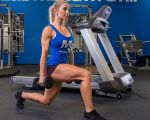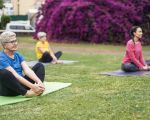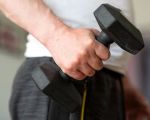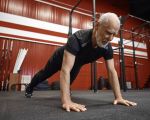Guide to Dynamic Warm-Ups for Workouts: Maximize Performance and Prevent Injury
When it comes to preparing for a workout, one of the most important aspects is the warm-up. A good warm-up routine prepares your body for exercise, increases blood flow to your muscles, and reduces the risk of injury. While static stretching has been traditionally used, dynamic warm-ups have become more popular for their ability to enhance flexibility, mobility, and overall performance. In this article, we’ll explore the importance of dynamic warm-ups, provide you with a list of effective exercises, and offer tips for incorporating them into your workout routine.
- Why Dynamic Warm-Ups Are Important
- Effective Dynamic Warm-Up Exercises
- How to Create a Dynamic Warm-Up Routine
- Common Mistakes to Avoid During Warm-Ups
- Real-Life Success Stories: How Dynamic Warm-Ups Improved Performance
Why Dynamic Warm-Ups Are Important
Dynamic warm-ups involve moving your body through a full range of motion and typically include activities like leg swings, walking lunges, and arm circles. These exercises target the muscles that will be used during your workout, allowing them to gradually increase in temperature, flexibility, and strength. Here are a few key reasons why dynamic warm-ups are crucial:
1. Increases Blood Flow and Flexibility
Dynamic stretches are designed to get your muscles moving, increasing blood flow and warming them up. This improved circulation helps enhance your range of motion and prepares your body for the intense movements that may come during your workout. It also prevents injuries by gradually stretching muscles, rather than stretching them too far, too quickly.
2. Improves Performance
Dynamic warm-ups help activate the muscles that you’ll be using in your workout. This activation leads to better performance by engaging your body’s muscles in preparation for more intense movements. Whether you’re lifting weights or running, dynamic warm-ups help ensure that your body is ready to perform at its best.
3. Reduces the Risk of Injury
One of the most important benefits of dynamic warm-ups is the reduced risk of injury. By increasing flexibility and muscle temperature, dynamic stretches help prevent muscle strains, ligament tears, and joint injuries. When your body is properly warmed up, your muscles are more pliable, which reduces the likelihood of overexertion or sudden, painful movements.
Effective Dynamic Warm-Up Exercises
There are a variety of dynamic exercises you can include in your warm-up routine, depending on your workout goals. Here are some of the most effective dynamic warm-up exercises:
1. Leg Swings
Leg swings are a great way to loosen up your hips, hamstrings, and quads. To perform leg swings, stand tall and hold onto a wall or sturdy surface for balance. Swing one leg forward and backward, gradually increasing the range of motion. Switch legs after 10-15 swings per side. This movement helps to activate the muscles around the hips and prepares them for running, squats, or other leg-intensive activities.
2. Walking Lunges
Walking lunges are excellent for warming up the lower body, particularly the hips, quads, and glutes. To perform walking lunges, take a step forward into a lunge position, lowering your back knee to the floor. Push off your front foot and bring your back leg forward into the next lunge. Continue walking forward, alternating legs. Walking lunges engage multiple muscle groups, preparing your body for movements like squats, lunges, or running.
3. Arm Circles
Arm circles are a simple yet effective way to warm up your shoulders and arms. Extend your arms out to the sides and make small circles. Gradually increase the size of the circles to further engage your shoulder muscles. Arm circles help prepare the shoulder joints for overhead presses, push-ups, or other upper body movements.
4. High Knees
High knees are a great cardio move to increase heart rate and warm up the legs and core. Stand tall and jog in place, bringing your knees up towards your chest as high as you can while pumping your arms. This exercise increases blood flow to the lower body and improves coordination and mobility.
5. Hip Openers
Hip openers are excellent for loosening up the hip flexors, which are often tight from sitting or sedentary activities. To perform a hip opener, stand tall with your hands on your hips. Lift one knee toward your chest, then rotate your hip outward in a circular motion. Repeat on both sides for 10-15 reps. This dynamic stretch helps prepare the hip area for squats, lunges, or running.
How to Create a Dynamic Warm-Up Routine
Creating a dynamic warm-up routine is essential for ensuring that your muscles are ready for your workout. Here’s how to structure your routine:
1. Focus on Full-Body Activation
Incorporate dynamic exercises that target all major muscle groups. This ensures that your body is fully prepared for the demands of your workout. A warm-up should activate your legs, core, and upper body to improve overall mobility and strength.
2. Include Movement-Specific Stretches
If you’re preparing for a specific activity, include dynamic stretches that mimic the movements you’ll be doing. For example, if you’re about to run, incorporate leg swings and high knees into your warm-up. For weightlifting, focus on movements like arm circles and walking lunges to prepare the muscles you’ll be using.
3. Keep It Short but Effective
A dynamic warm-up doesn’t need to take long—just 5-10 minutes of focused movement is enough to prepare your body for exercise. Ensure you perform each exercise with controlled movements, gradually increasing the intensity to raise your heart rate and muscle temperature.
Common Mistakes to Avoid During Warm-Ups
While dynamic warm-ups are highly effective, it’s important to avoid certain mistakes to ensure you’re getting the most out of your warm-up:
1. Skipping the Warm-Up
Skipping the warm-up is one of the most common mistakes athletes make. Without a proper warm-up, your body is more susceptible to injury. Even if you’re short on time, spending just a few minutes on dynamic stretches can greatly improve your workout and prevent harm.
2. Overdoing It
While dynamic warm-ups are designed to increase flexibility and mobility, over-stretching can cause strain. Avoid pushing your body too hard in the warm-up—keep the movements controlled and focused on gentle activation, rather than extreme stretching.
3. Forgetting to Cool Down
Just as warming up is important, so is cooling down. After your workout, take time to stretch and bring your heart rate back to a normal level. Cooling down can help prevent soreness and improve flexibility over time.
Real-Life Success Stories: How Dynamic Warm-Ups Improved Performance
Many athletes and fitness enthusiasts have experienced significant improvements in performance and injury prevention by incorporating dynamic warm-ups into their routines. For example, Sarah, an avid runner, noticed a considerable reduction in knee pain after adding dynamic leg stretches and high knees to her pre-run warm-up. She now enjoys longer, more comfortable runs and has reduced the number of injuries she’s experienced.
Another success story comes from John, a weightlifter, who struggled with shoulder discomfort during overhead presses. After incorporating arm circles and shoulder mobility exercises into his warm-up, he reported less pain and better range of motion during his lifts. His strength training sessions are now more effective, and he feels more confident when pushing his limits.








